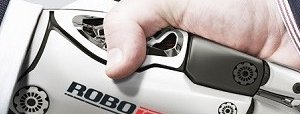
Humans First, Robots Second
Humans First, Robots Second
Read Time: 1 Minute
Word Count: 296 Words
Key Take Away: Robots give machine shops a competitive advantage that cannot be gained in other ways.
With global competition, constant technological innovation is now the standard for the manufacturing industry – especially for small to mid-sized machine shops. With these innovations, job security concerns arise. Machinists are worried that they may lose a long-standing source of income due to advancements such as robotic CNC automation. RoboJob-USA ensures that this won’t be an issue.
According to a Bloomberg Business article, U.S. manufacturers hired 60,000 people in October. This is double economists’ estimates and the highest number recorded since June of last year. Additionally, there were a record 310,700 industrial robots operating in the U.S, last year, according to a report from the International Federation of Robotics. Overall, the article explains, the ratio of robots to humans was boosted, with 255 industrial robots operating for every 10,000 manufacturing employees last year.
It is a common misconception that machining careers are set to decline with an increase in robotic automation. Although certain tasks that fall under a machinist’s job description will no longer be necessary, different, more creative tasks will take its place. In essence, robotic automation allows robots to take over hazardous or repetitive tasks, while machinists work in a more collaborative role in various manufacturing processes. Examples of tasks that industry employees can take on are the design of new products, improved production strategies, or general monitoring of the fully automated production line. These new delegations of responsibilities on a shop floor result in higher efficiency, productivity, and flexibility – but it doesn’t stop there. These results have a domino effect, which lead to cost savings, higher returns on investment, and increased job satisfaction for machine shop employees. With these considerations, it’s clear that viewing CNC automation as a tool, rather than a threat, could be the paradigm shift that revives the manufacturing industry.